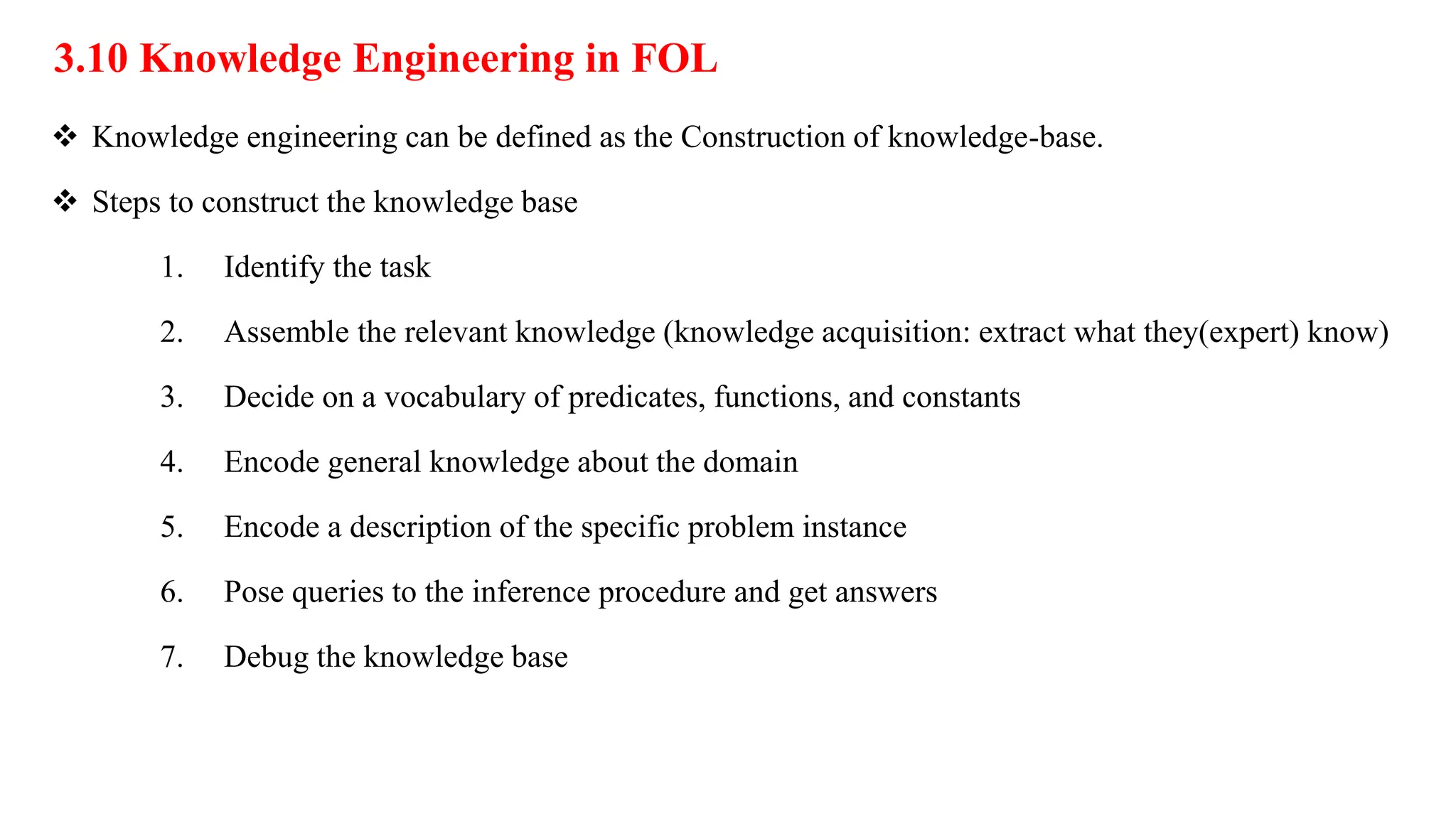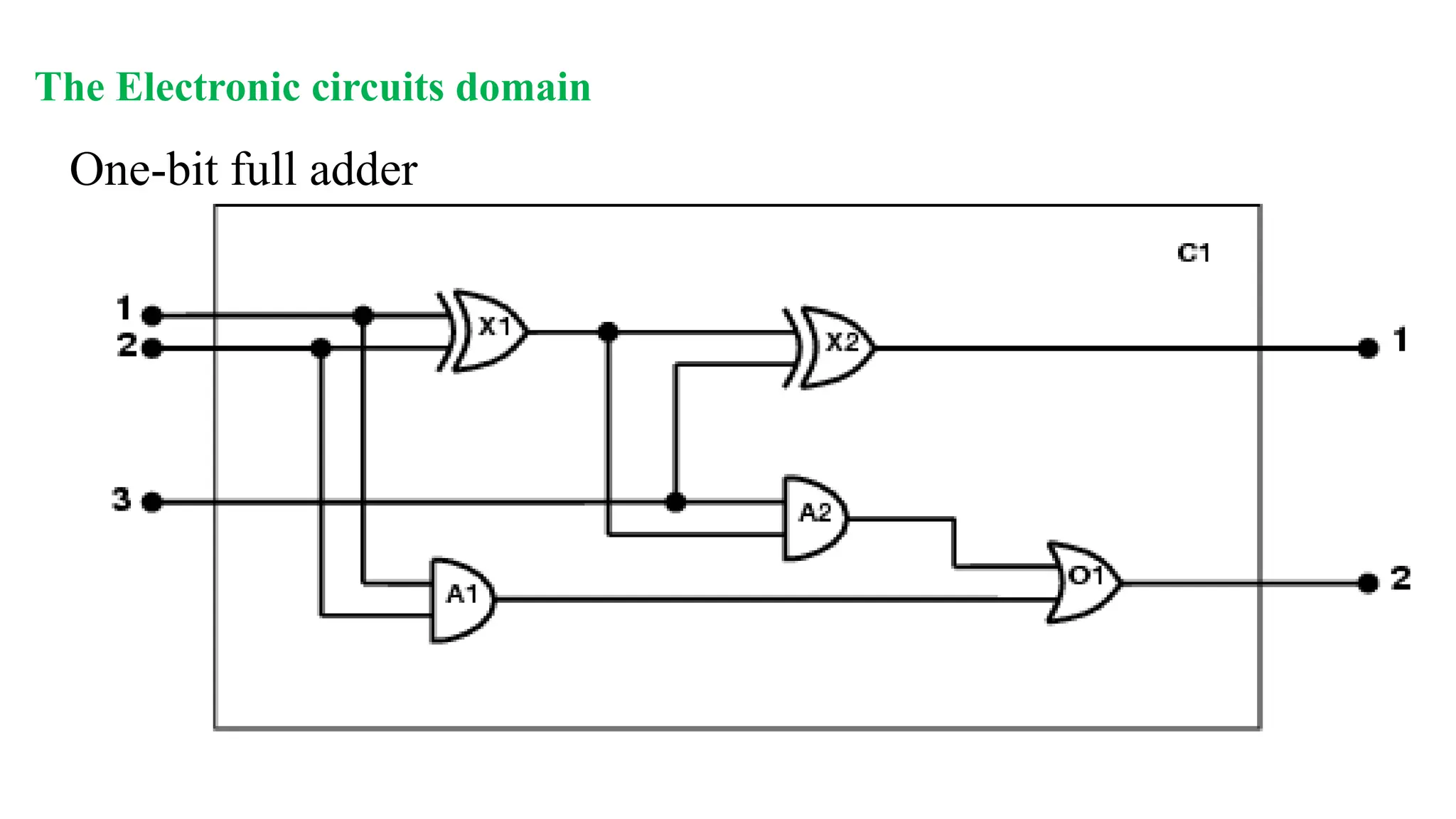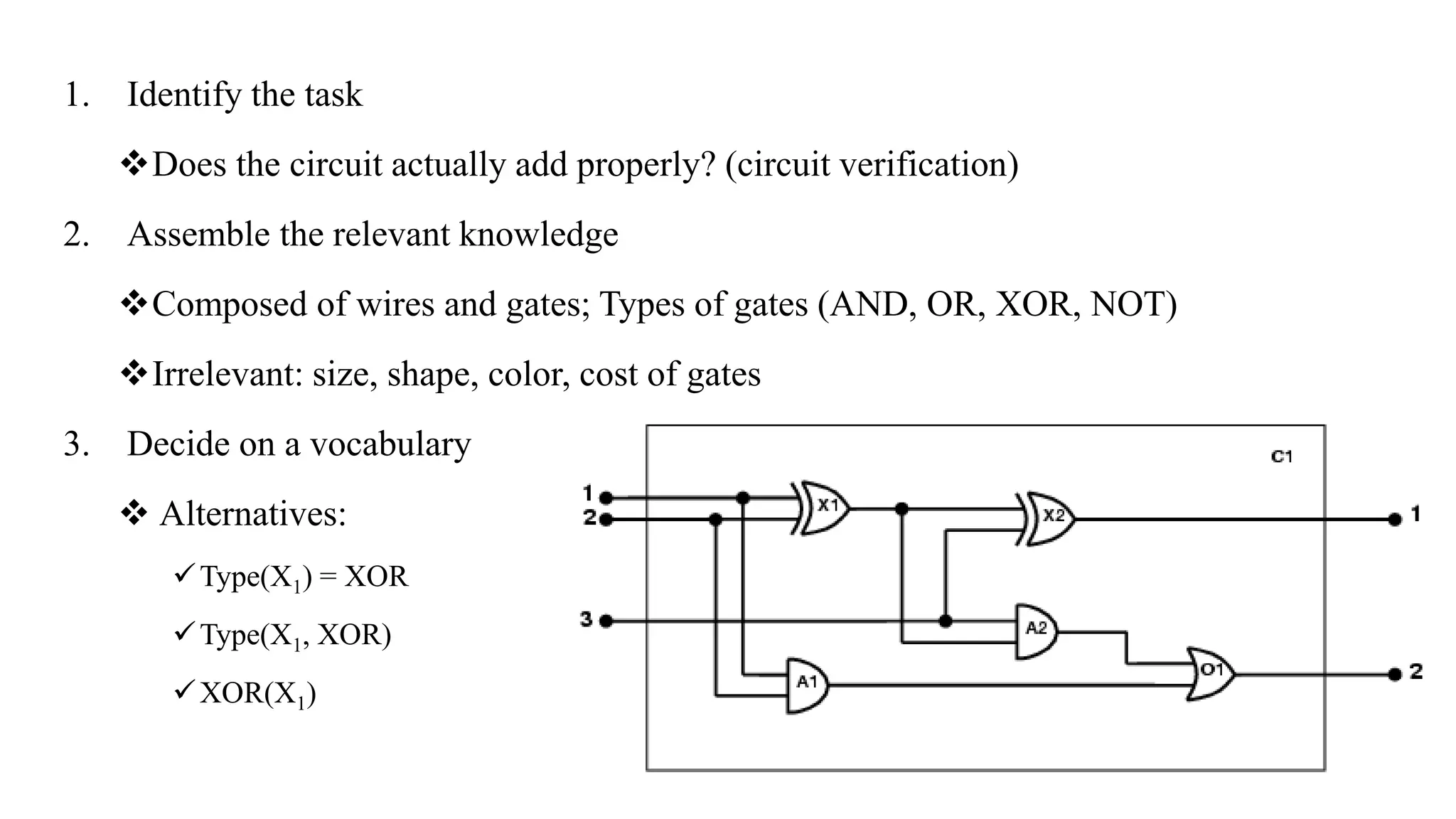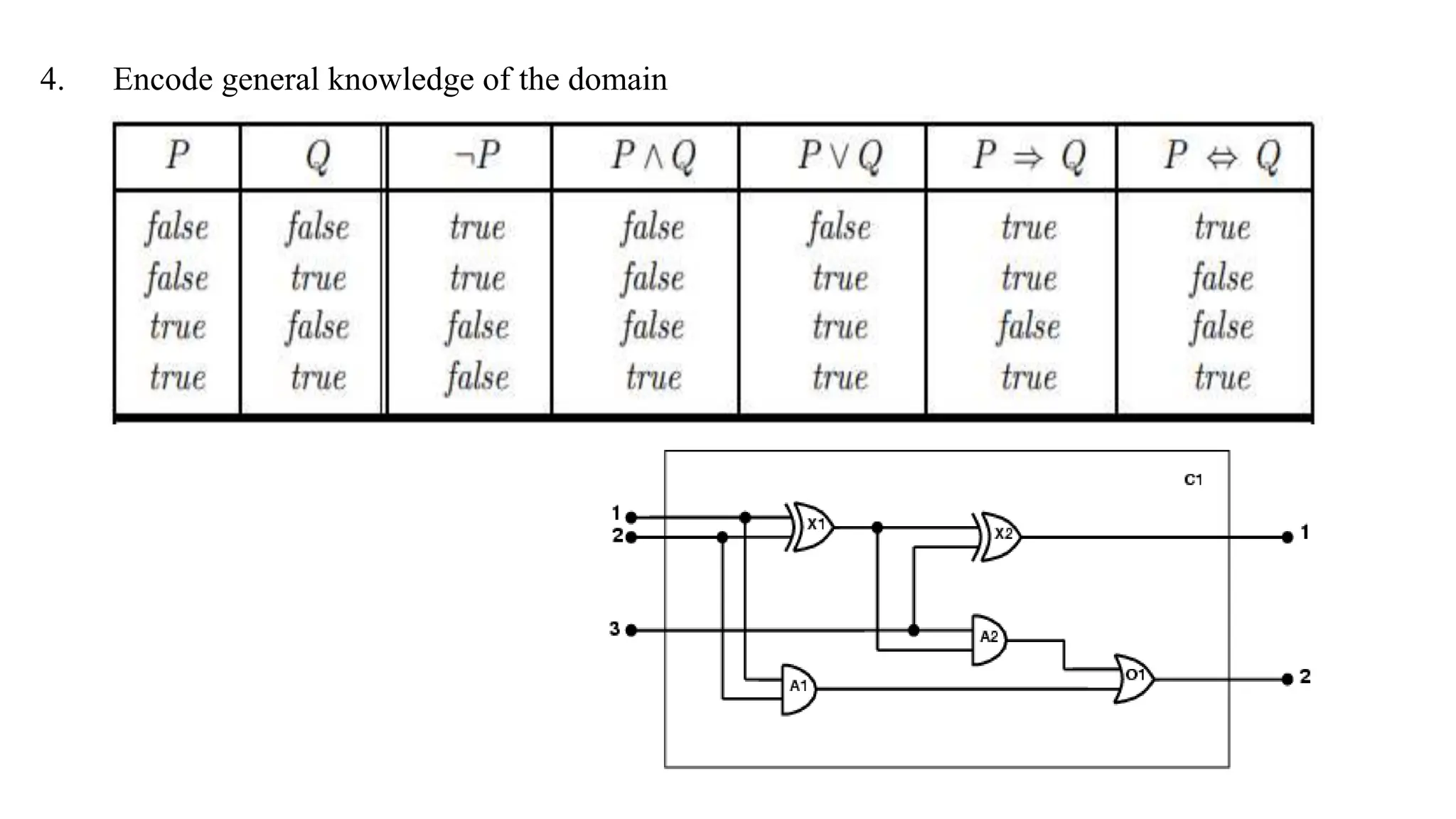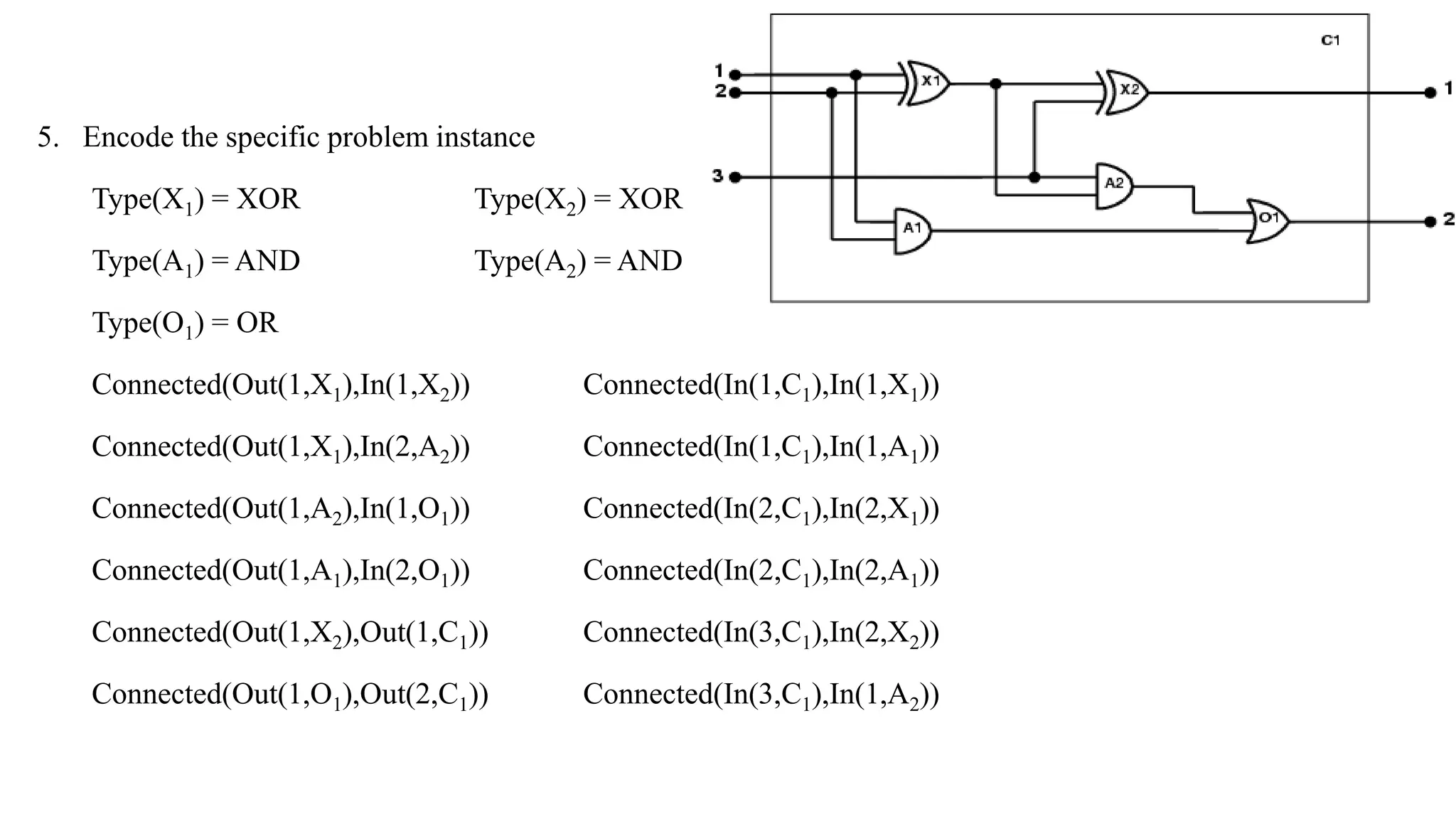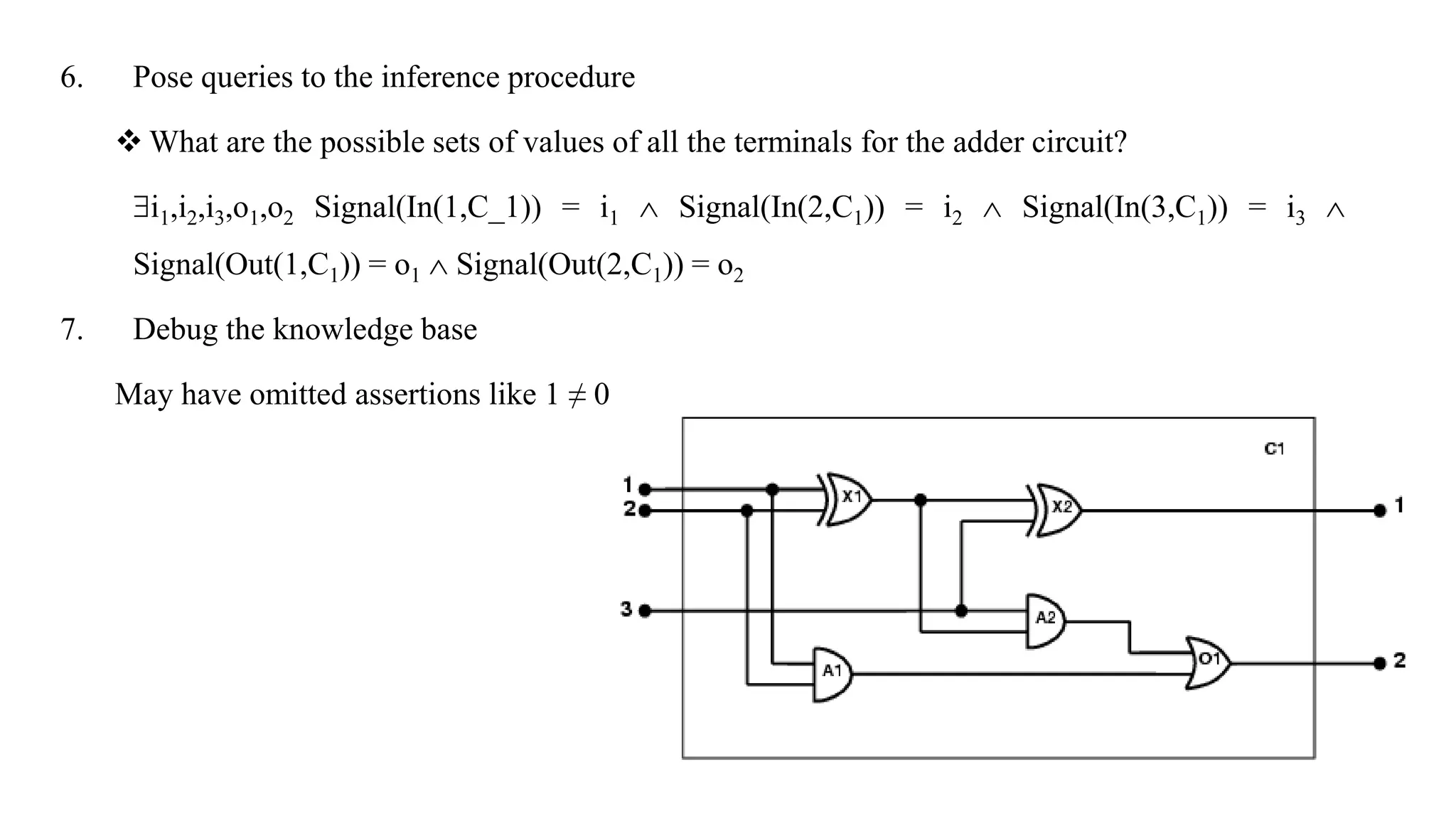Chapter 8 discusses the comparison between propositional logic and first-order logic (FOL), highlighting FOL's capacity to represent objects, properties, relations, and functions more expressively. It explains the syntax and semantics of FOL, including terms, atomic sentences, quantifiers, and the construction of knowledge bases for logical assertions and queries. Additionally, practical applications of FOL in domains like kinship and electronic circuits are explored.
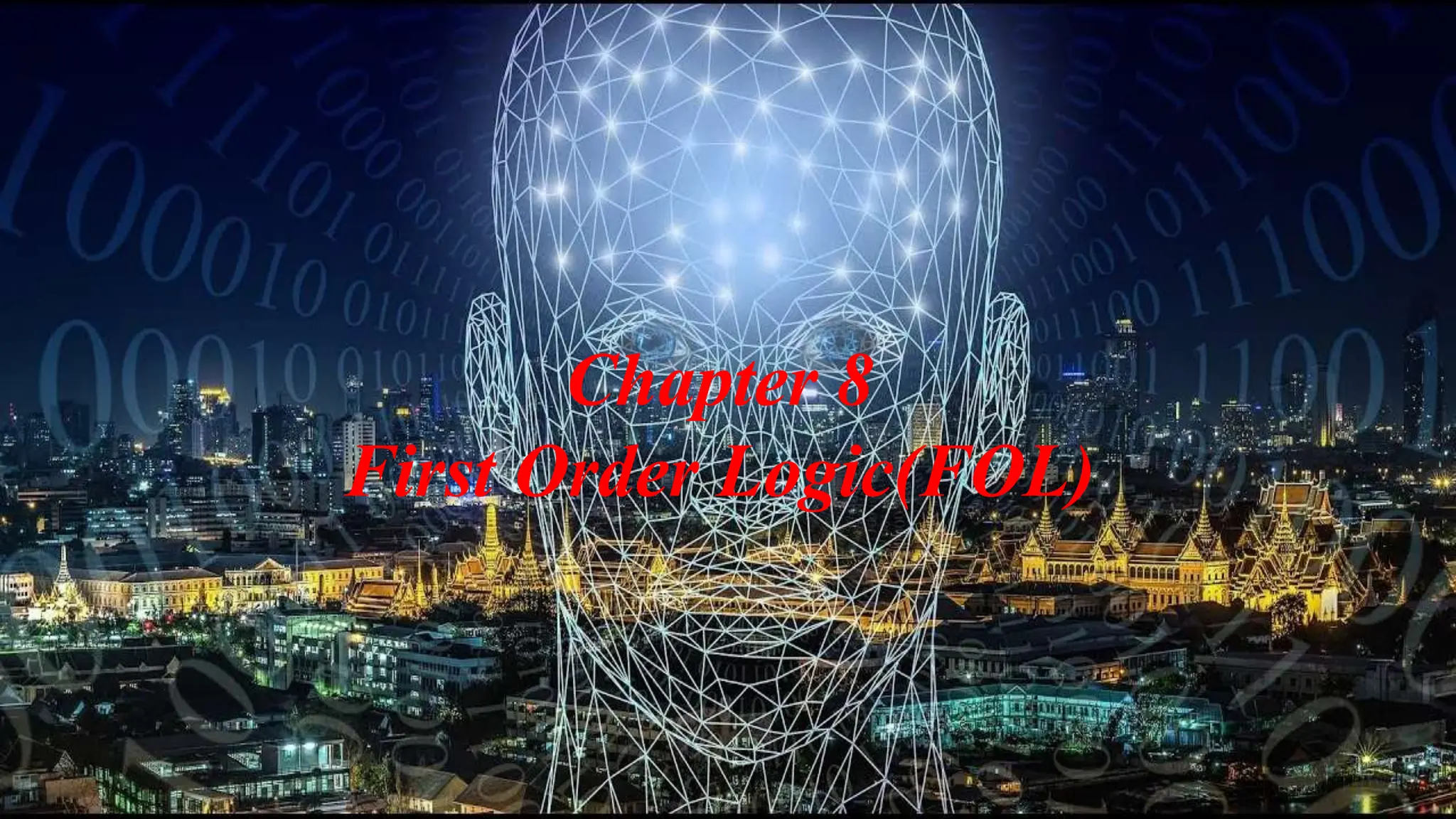
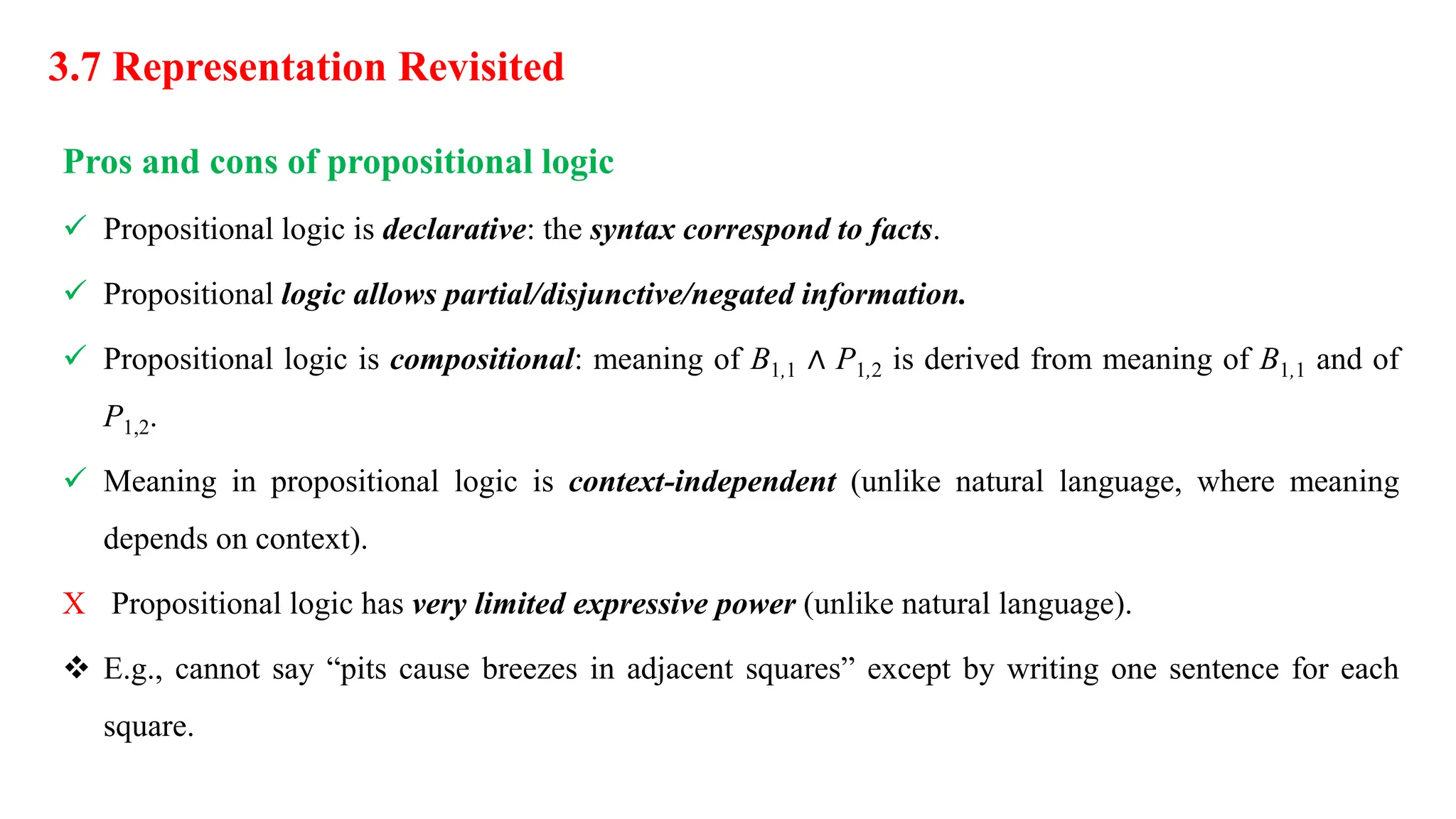


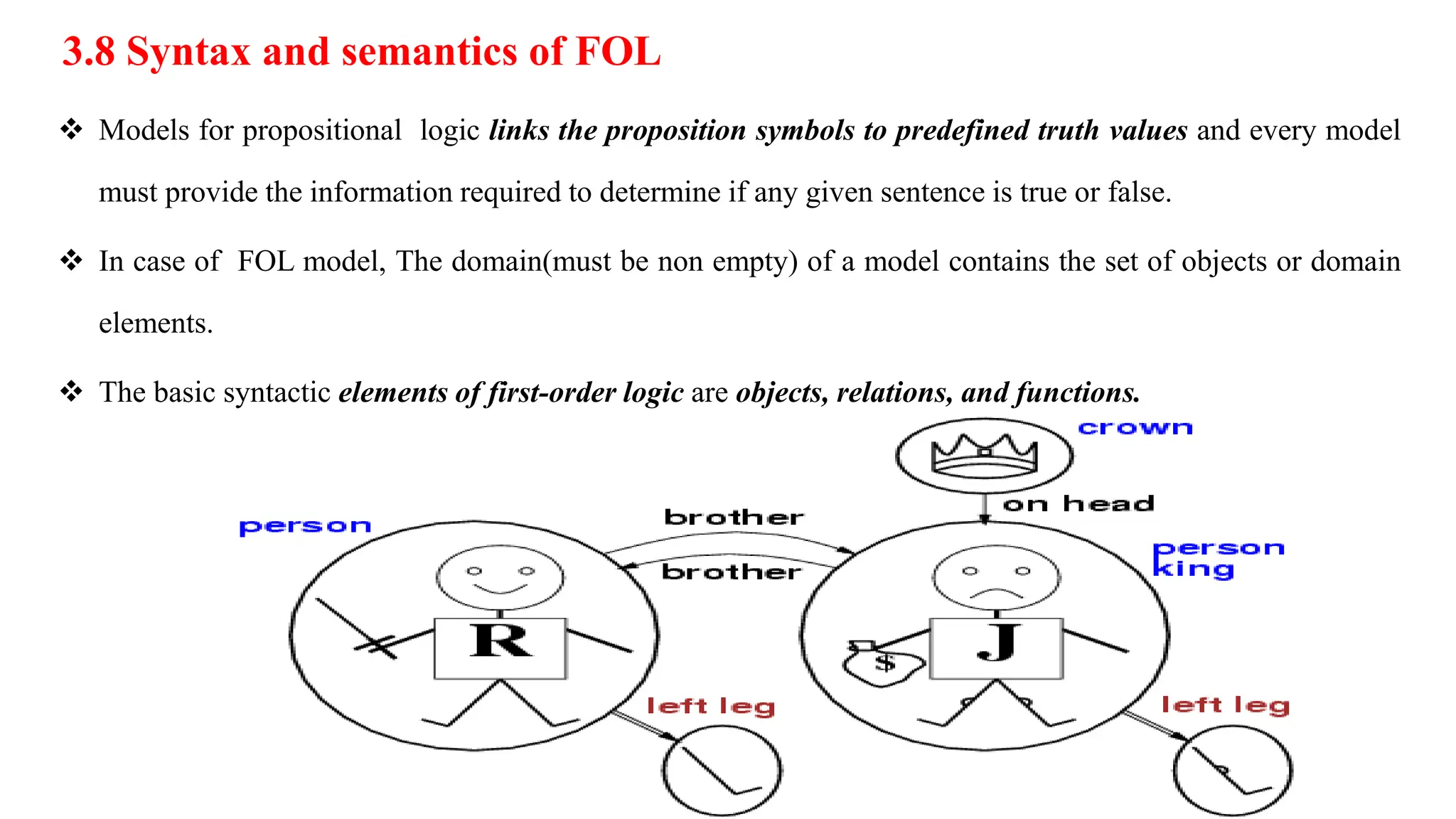
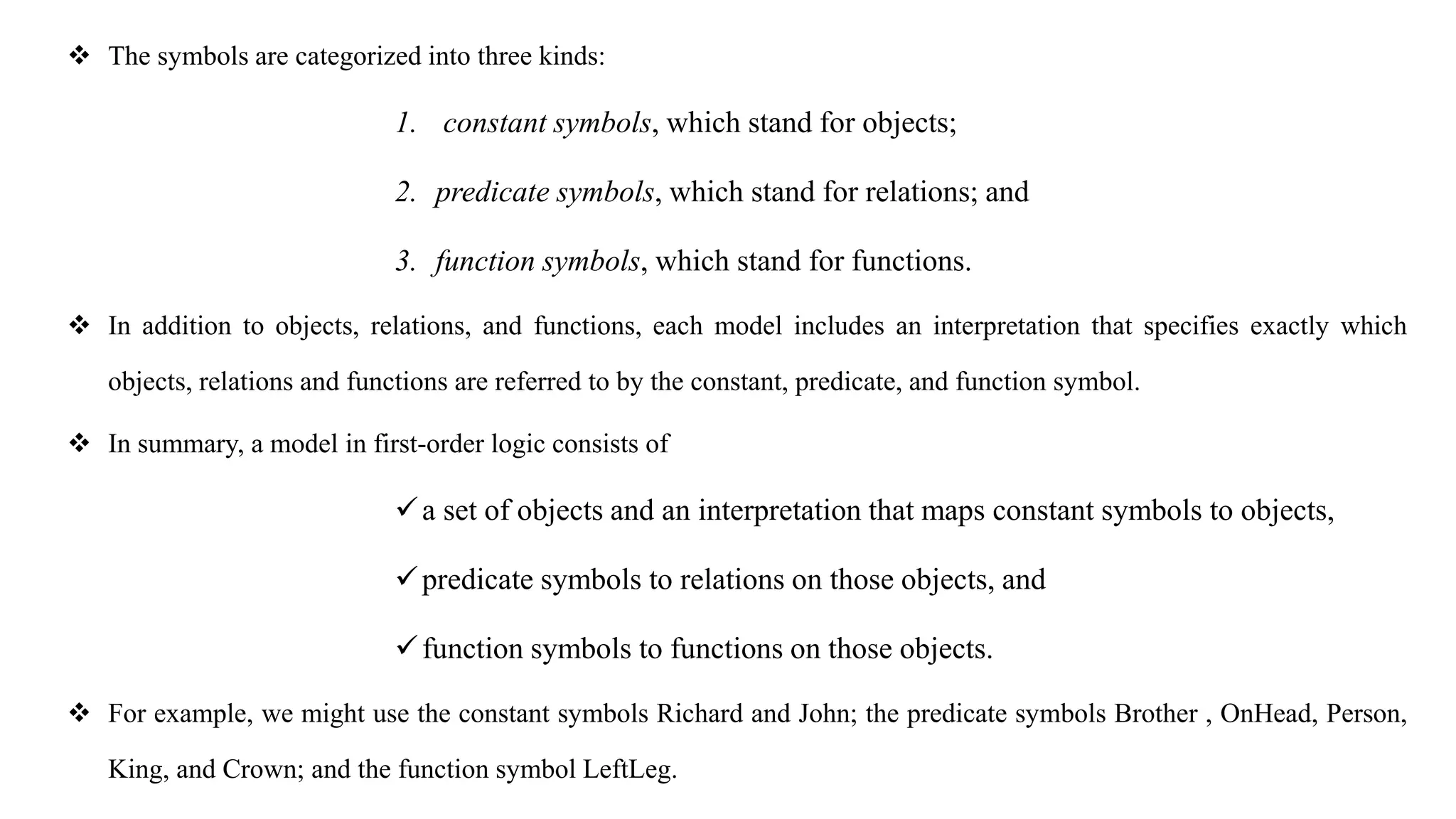
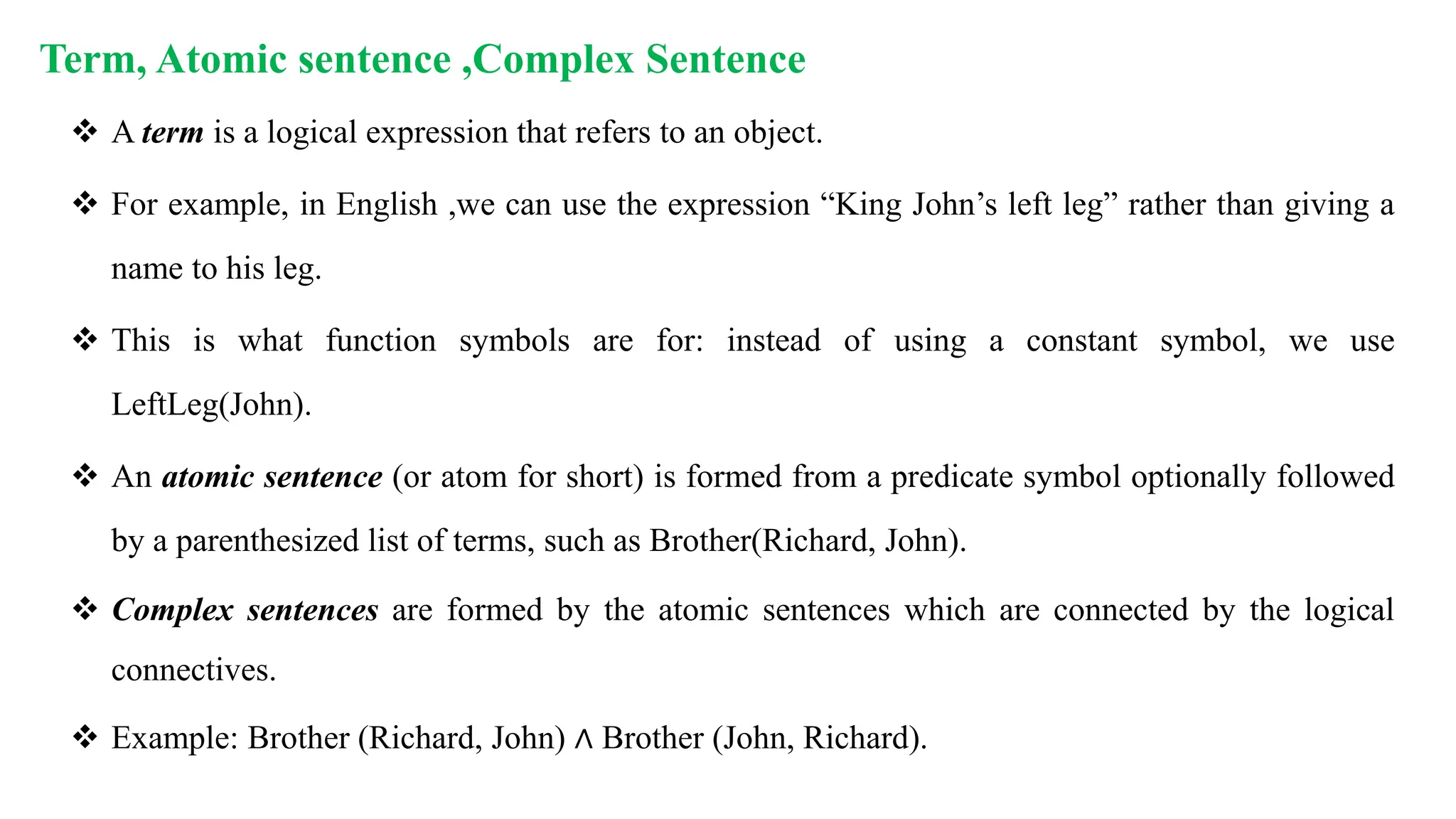
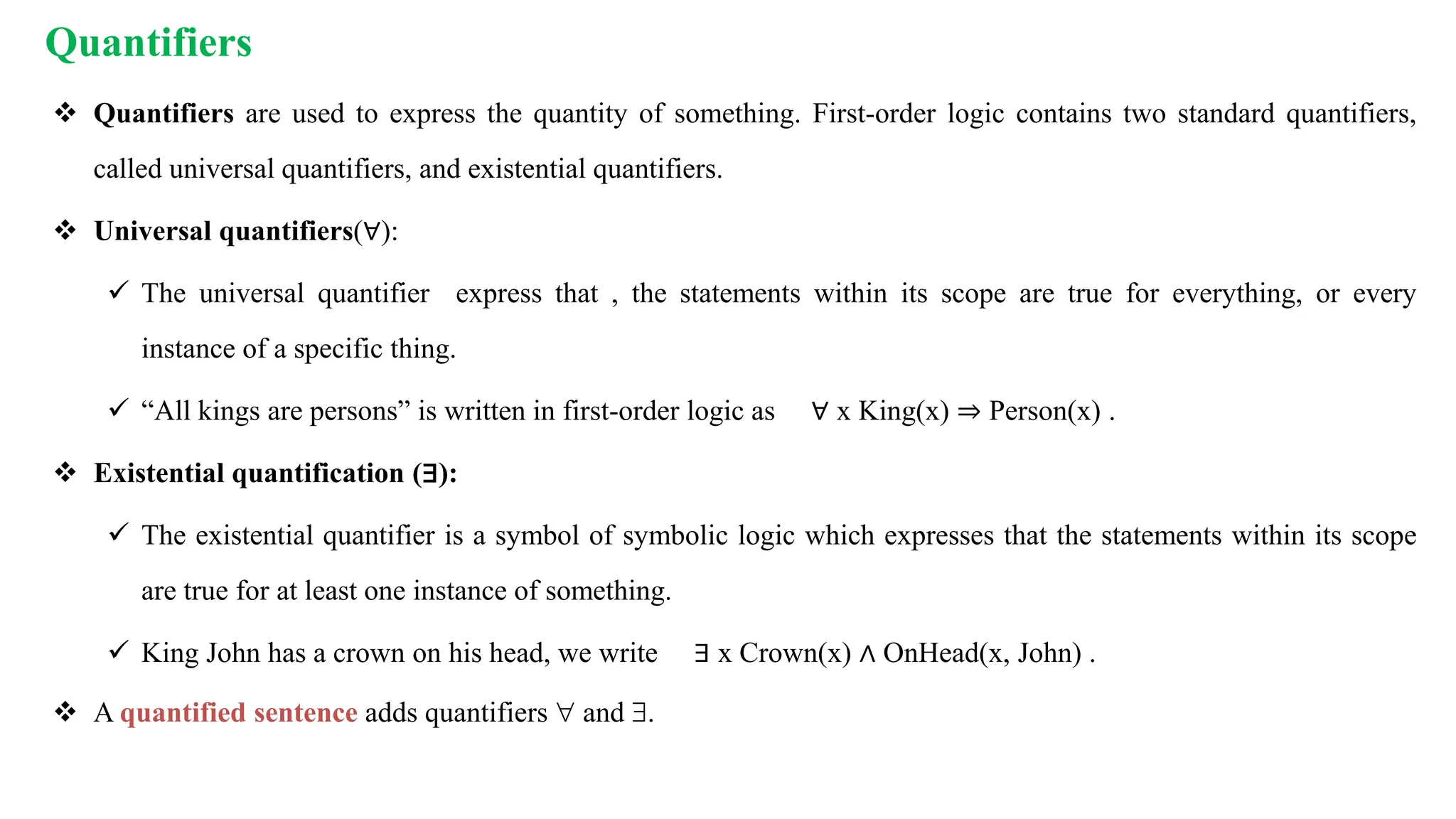

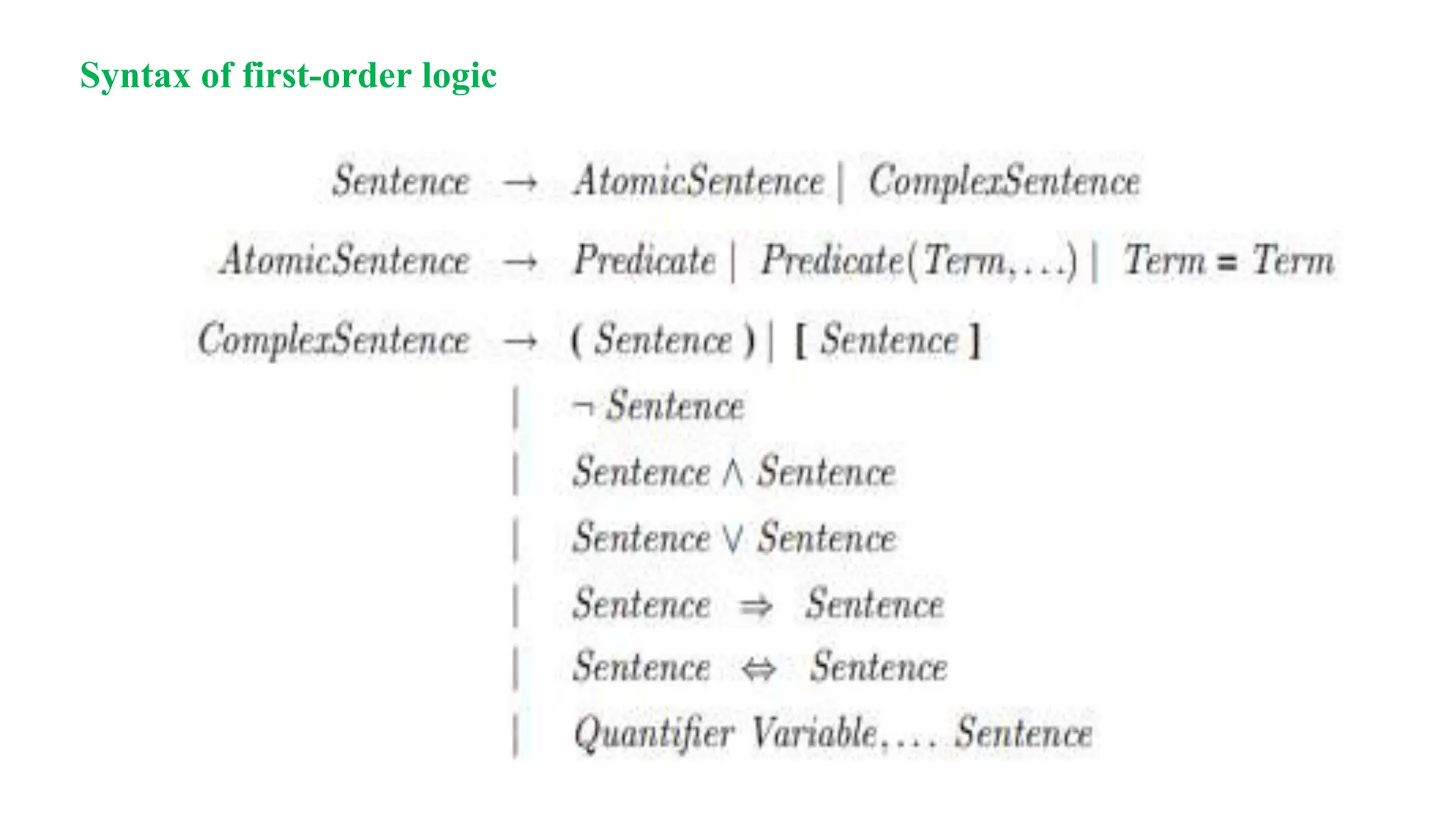
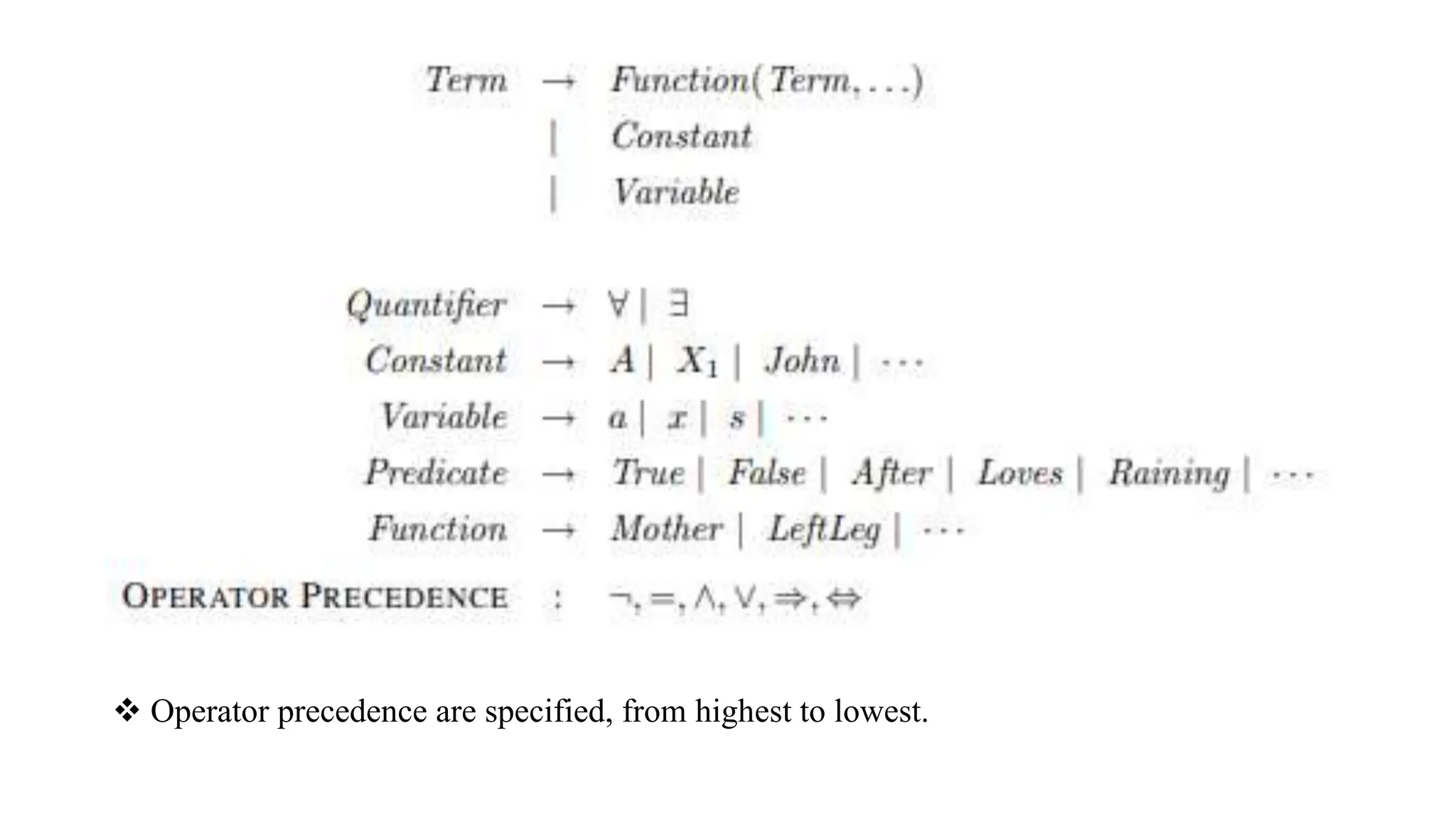
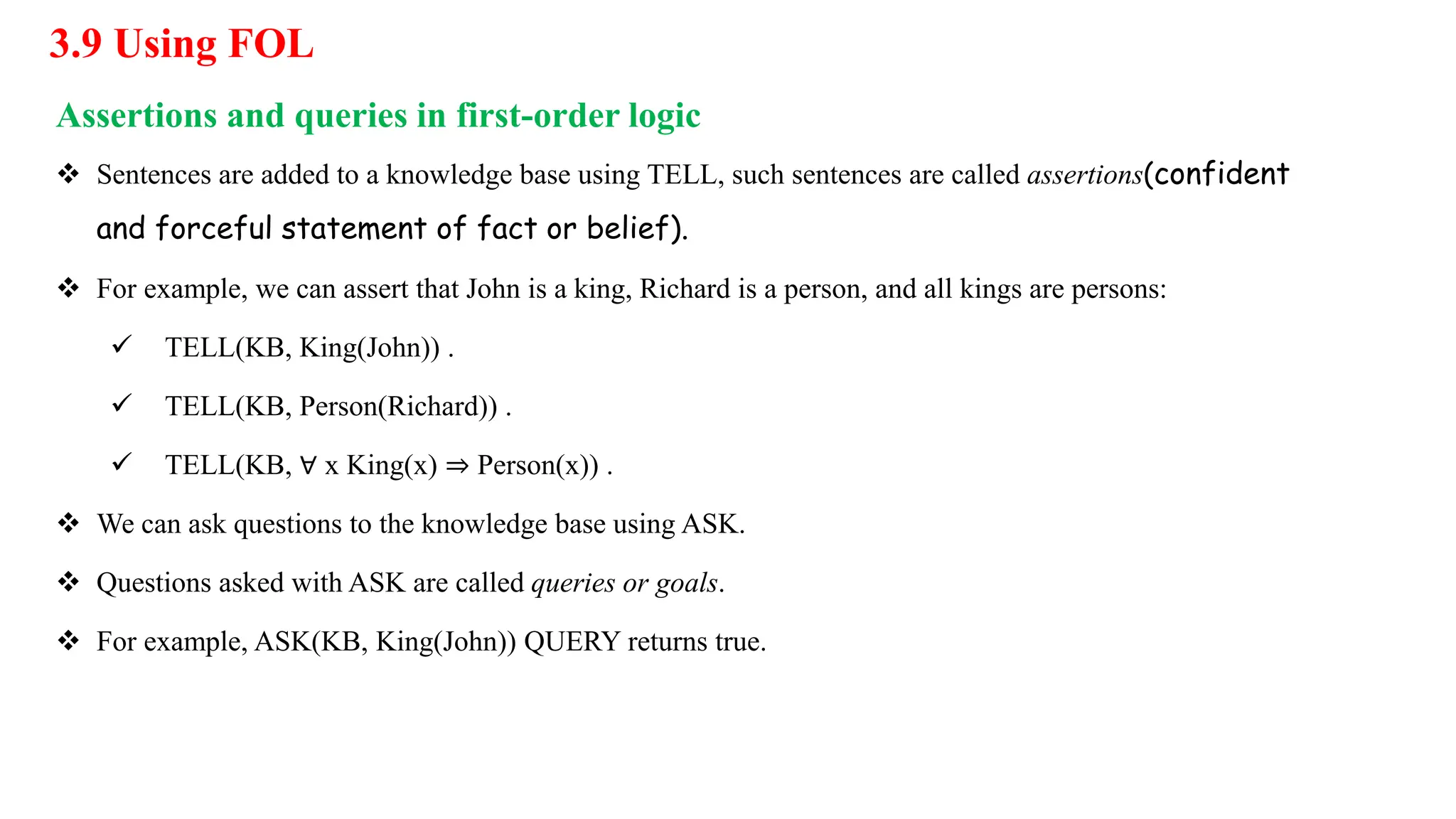
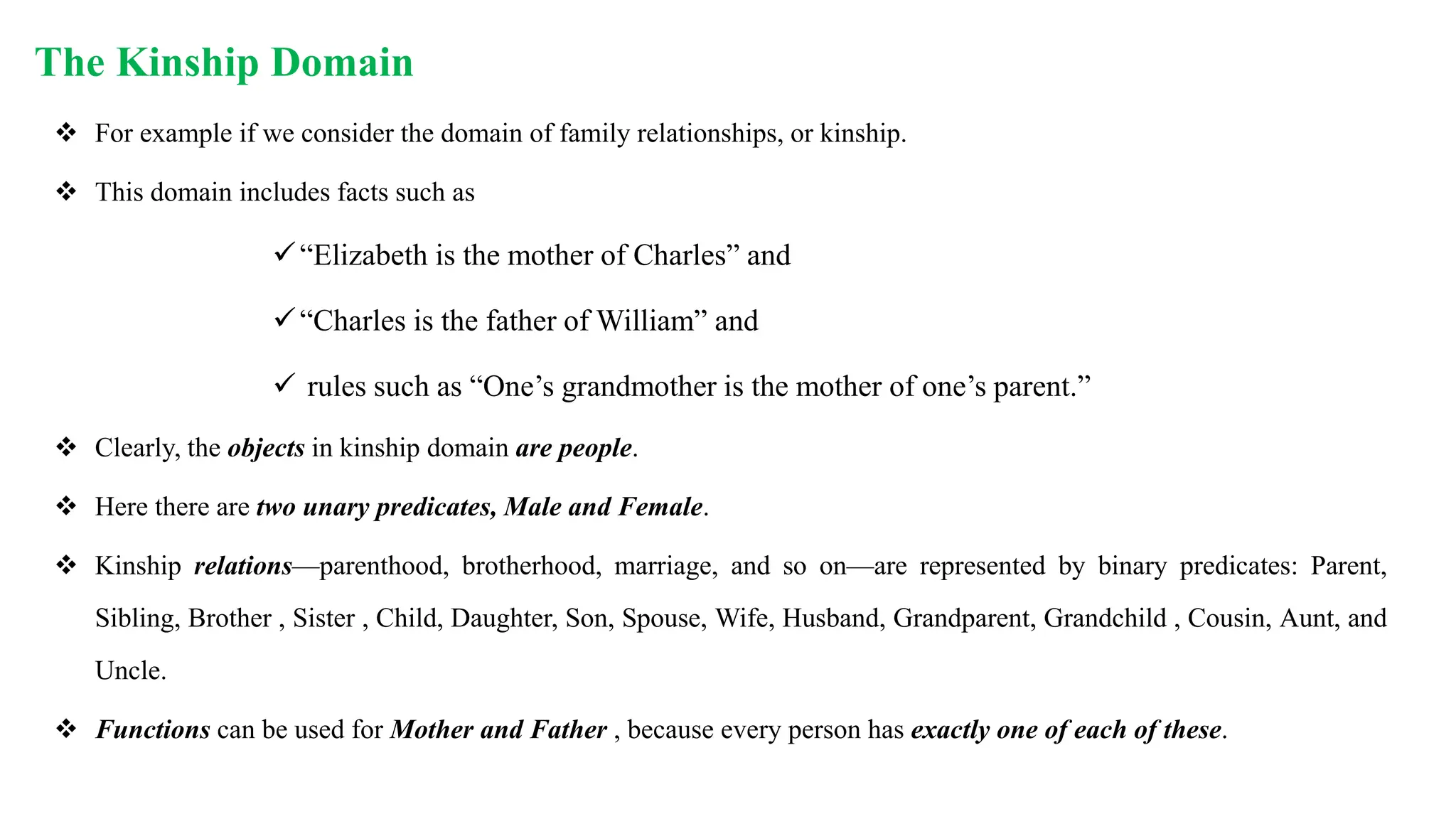
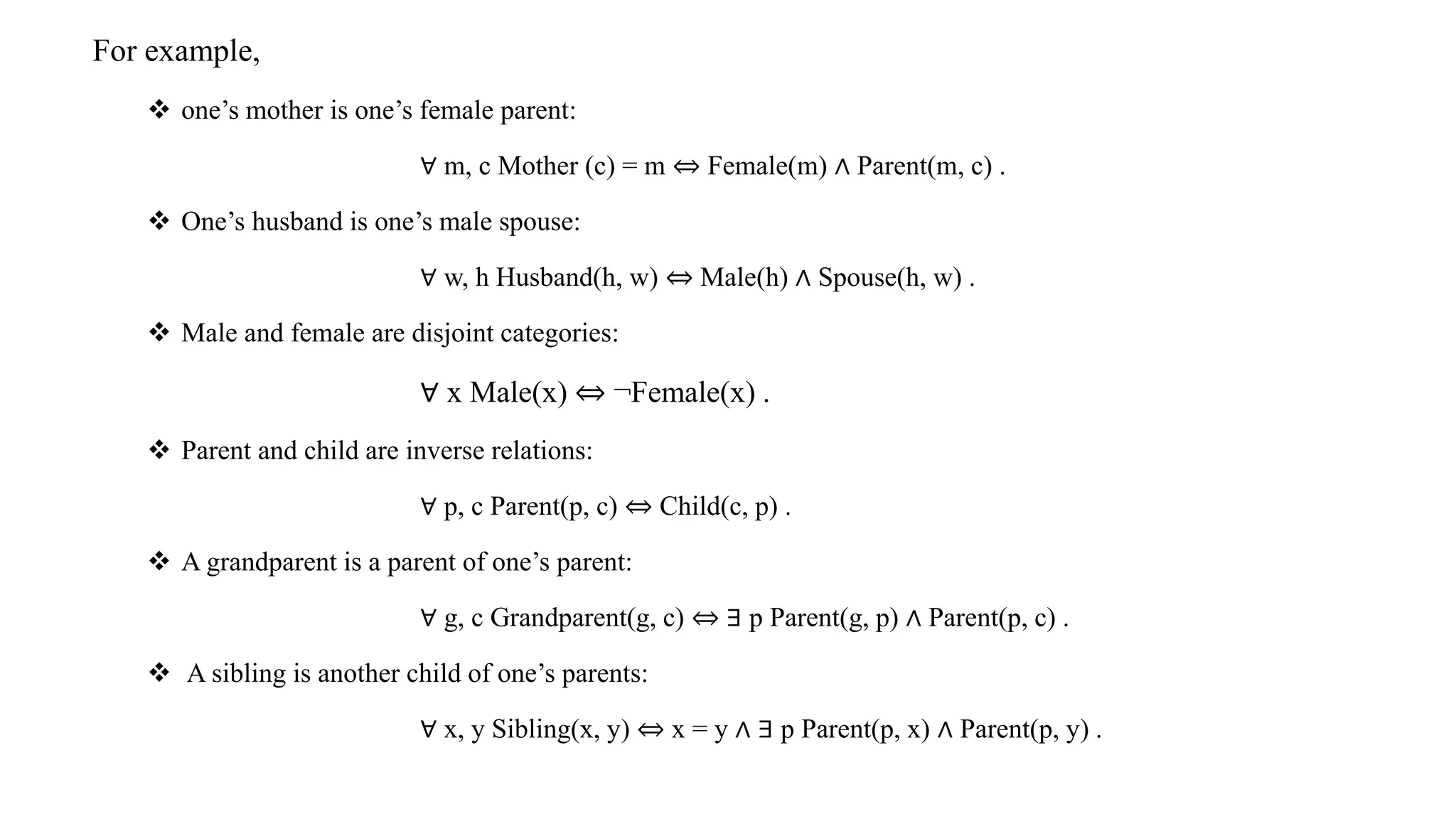
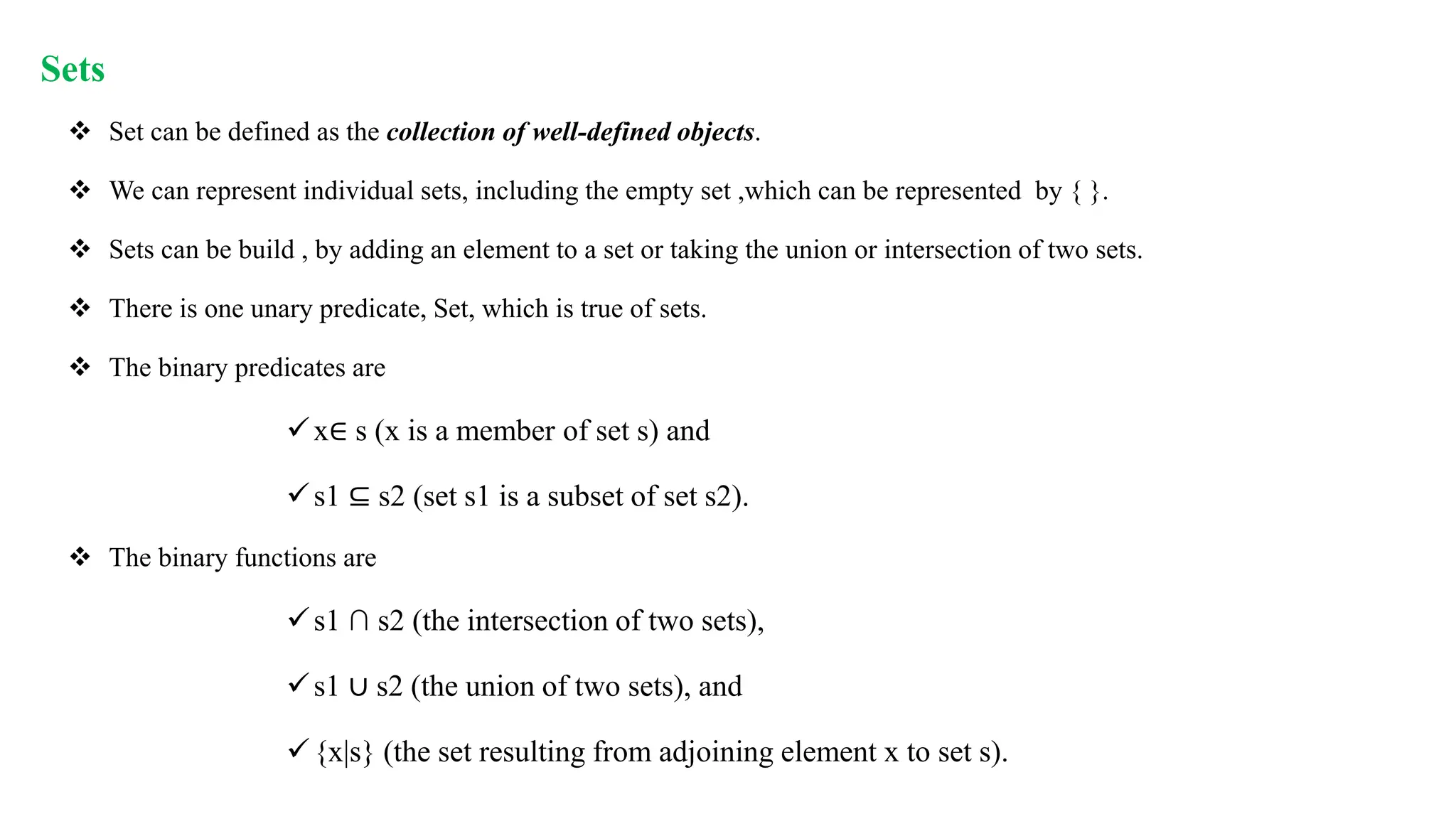
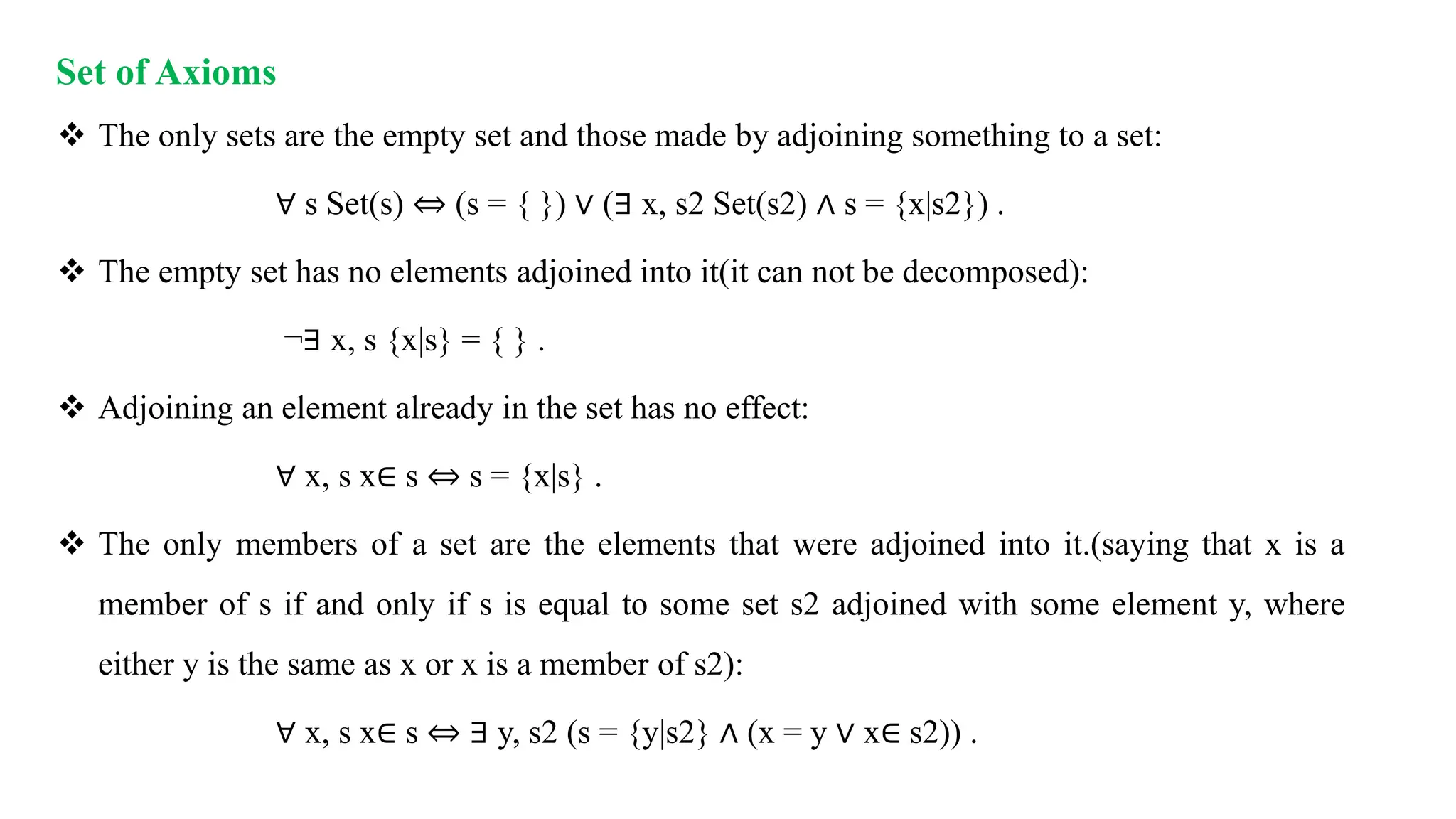
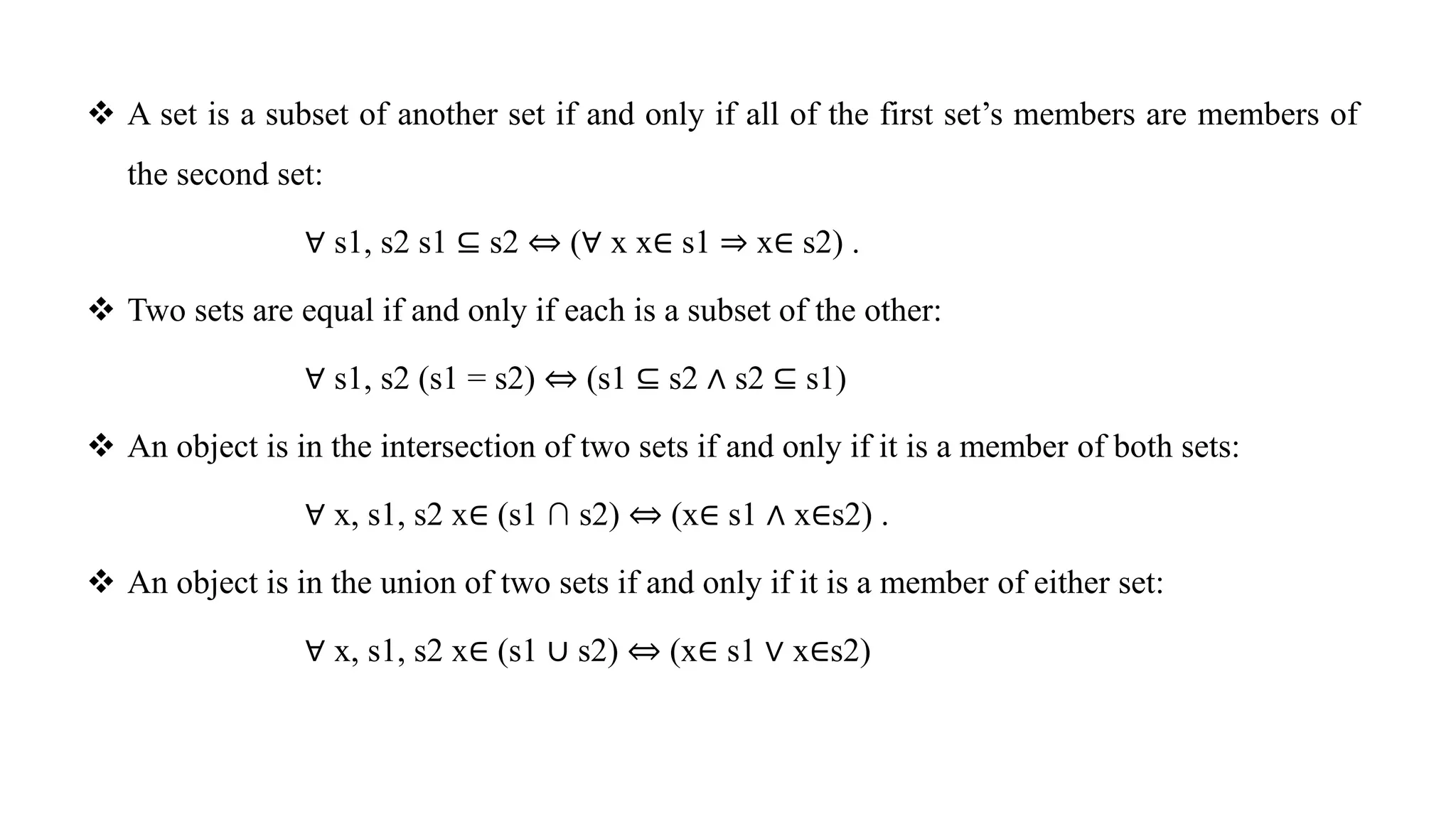
![The wumpus world
The agent percepts can be represented as five element list, [Stench, Breeze, Glitter, Bump, Scream].
The corresponding first-order sentence stored in the knowledge base must include both the percept and the time
at which it occurred; otherwise, the agent will get confused about when it perceived what(integers time
stamps).
For example the agent perceived ([Stench, Breeze, Glitter , None, None], 5) .
Here, Percept is a binary predicate, and Stench and so on are constants placed in a list.
The actions in the wumpus world can be : Turn(Right), Turn(Left), Forward, Shoot, Grab.
To determine which is best, the agent program executes the query
ASKVARS(∃ a BestAction(a, 5)) ,
which returns a binding list such as {a/Grab}.
The agent program can then return Grab as the action to take.](https://image.slidesharecdn.com/ch8fol-240519131129-97081954/75/First-order-logic-in-artificial-Intelligence-pptx-18-2048.jpg)
